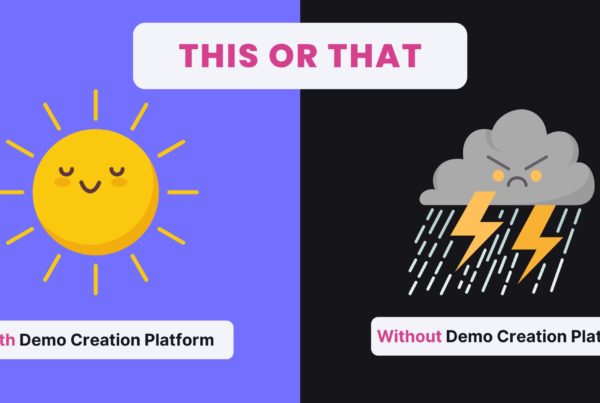SaaS vendors typically choose one or the other when it comes to socializing their tech to buyer committees: show a demo account over zoom, or set them up with a real working trial of your tech to use. And historically, we’ve lacked any other option.
But here’s the new movement in B2B SaaS:
Keep offering that real trial. (~25% of your prospects will take it.)
Then, offer a “zero barrier of entry sandbox trial” to the other 75%. It’s enough to keep the convo going, enable them to “show” your tech off to their team, and then use it to loop them into the real trial later (if you even need it at that point).
Prospects don’t actually test your business case in a trial anyways – they’re really just testing out your user experience and how easy it is to use your product.
But even though prospects aren’t testing your whole system in a trial, you’re setting up your entire system anyways. This incurs tons of costs, including customer time, server spend, training time, and more, just so they can get a clickable leave-behind. (Seem worth it to you?)
Plus, prospects get lost in the real trial and you start to lose out on things that weren’t even in the initial scope. You might be pitching one area of your product, but now they have access to the whole shebang – and they decide to test out another area. But you haven’t set up that area, the prospect decides it all feels too “clunky,” and you lose out on that sale.
What is a Sandbox Trial?
It’s not a playground toy full of questionable grit – a sandbox trial is an emerging theme in B2B SaaS. You enable prospects to log into your demo account and experience your UI and value proposition themselves. This replaces the traditional trial, where you actually upload their data and onboard/configure a new customer just so they can test out your product.
What Are the Downsides of a Sandbox Trial?
But the sandbox trial isn’t all sunshine and roses. There are a few tradeoffs you should consider.
The main loss is the authentic user experience. Your prospect isn’t seeing their data like they do in a typical trial, and it might make it harder for them to wrap their mind around your product.
Plus, you’re missing out on some skin in the game. A lot of sales reps use trials as an excuse to keep meeting – every bug comes with another call to review how you fixed it, and then you can just slide right into a selling conversation there.
And there’s the Trojan Horse advantage missing. Often a real trial exposes just how bad the current state is for your prospect – they’re finding solutions to problems they didn’t even know they had. By doing a sandbox trial instead of a real trial, you lose your shot at getting behind the curtain and learning the real inside story.
Finally, enabling a sandbox trial does cut down on the barrier to entry so more people will move forward. But at the conclusion of a sandbox trial, the prospect is not “set up” with a real instance. They don’t seamlessly roll into their forever home. You’ve got to basically start the onboarding/config process from scratch.
How Do You Decide Which to Use?
There’s no one right answer for everyone. But somehow, most SaaS vendors are just picking one option and using it across the board, regardless of the specifics of each sales situation.
I’m suggesting you invest in enabling a sandbox trial AND a real trial for your sellers, and let them pick the right one for each situation. If the sandbox trial makes the sale, great! But sometimes you need a real trial option too to get the best of both worlds.
A shoutout to Steve Richard, founder of ExecVision, for bringing up this idea in a recent Reprise roundtable.
Photo by Ostap Senyuk on Unsplash

Joe Caprio is a cofounder at Reprise.
He also advocates for ICW, ask him about it!





